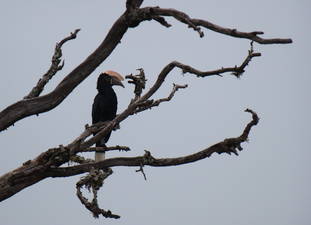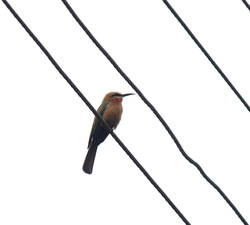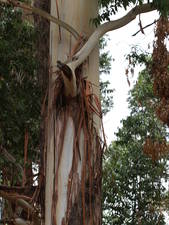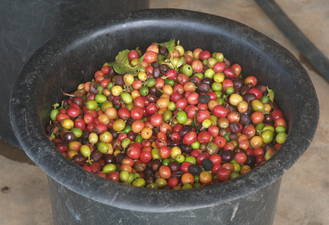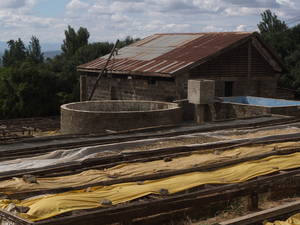Subukia estate
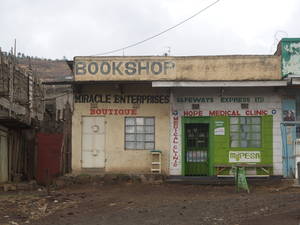
shops on the way to Subukia
Kassim (a Luo-speaker) was learning some Kikuyu
from Duncan and Demetrios, so I gave him the
"Some Basic Facts about the Kikuyu Language" (PDF) printout I'd brought
with me.
We drove north to Subukia estate, which is pretty much right on the
equator. Here we were visting what is now a cooperative-owned coffee
and tea plantation.
Subukia Estate is a 2000 acre property (40% coffee, 35% tea, 5%
conservation reserve), employing 600 staff, which a white settler
sold back in 1993. Some 1500 Kenyans set up a cooperative and with a
government loan (at 70% LVR) bought out the estate. Five of the members
work as directors; the rest are all over Kenya and even the world.
(The cooperative pays dividends already, but when the loan is paid off
in two years the members will be "very rich men".)
We started at
"Mugunda
House", the old colonial farmhouse which is now a homestay.
After looking at the birds around the house and having tea, James, one of
the directors, took us on a short bird-watching walk around the property,
down to a creek and back.
Birdwatchers, mostly from the UK, come and stay in Mugunda House for
several days, since 270+ species have been seen on the property and
a hundred can be seen in a day. We didn't manage anything like that,
but with James, Kassim and Duncan pointing birds out we saw what seemed
like a vast array, including both large striking birds and a range of
beautiful little sunbirds.
It was gloomy and drizzled a bit, so I don't have a lot of photographs.
The birds we saw included: yellow-whiskered greenbul, auger buzzard,
bearded woodpecker, Eurasian beeeater, common bulbul, variable sunbird,
red-eyed dove, white-eyed sooty flycatcher, speckled pigeon, Hartlaub's
turaco, speckled mousebird, silvery-cheeked hornbill, bronze sunbird,
tropical boubou, cinammon-breasted beeeater, Ruppell's robin chat,
northern double-collared sunbird, masked weaver, brown-crowned tchagra,
common fiscal, greycapped warbler, scarlet-chested sunbird, African dusky
fly-catcher, hadada ibis, paradise fly-catcher (brown and white morphs),
pied crow, rufous sparrow, golden-winged sunbird, white-bellied tit,
bronze mannikin, pin-tail wader, northern brubru, Baglafecht weaver,
olive thrush, red-billed fire-finch, red-cheeked cordon-bleu, African
citril, and yellow-breasted apalis.
During the walk we were joined by another group, Ben and Peter, who were
doing the tour as fact-finding mission for a tour company (TourDust) they
ran which was thinking of using IntoAfrica Kenya as a local operator.
After the walk we had lunch and then had a look at the coffee processing
machinery. (The beans are not ground here, or indeed in Kenya. James
sends a 40 foot shipping container to Mombasa, and the tea and coffee
are processed and packaged and marketed by international companies.)
We were supposed to get a tour of the tea plantations too, but there was
a vehicle breakdown so we headed back to our hotel and were back before 5pm.
Next: Lake Nakuru
Previous: a Kikuyu farm
Up: Kenya + Tanzania


